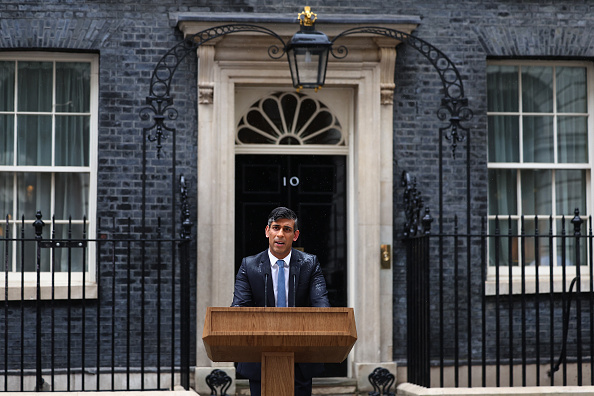UPDATED: The government has announced further changes to the Coronavirus Job Retention Scheme (CJRS).
The scheme, also known as furlough, has been extended until April 30, 2021. The chancellor announced last month that the scheme would continue until March 2021. The government will continue to contribute 80 per cent towards wages of those employees who have been furloughed.
What happens when furlough ends?
Before November, Rishi Sunak’s previous plan was to wind up the furlough scheme on October 31. After that, staff returning to work would’ve been moved onto the less generous Job Support Scheme (JSS). JSS has been put on hold.
But now that the furlough scheme has been extended, furloughed employees will remain on the Job Retention Scheme, with the government paying up to 80 per cent of staff wages (capped at £2,500 a month). Anyone made redundant after September 23 can be rehired and put back on furlough.
Can you work while on furlough?
No, employees cannot take on any work for, or on behalf of, their employer while they’re on furlough. Nor can they take on any work linked or associated with their employer. This includes providing services (that includes attending meetings) and generating revenue for the business.
Employees can undertake study and training as long as it doesn’t contribute to any business activity or generate revenue or provide for the business that furloughed them. However, if the employee needs to finish off training, then employers must pay the national minimum wage, even if it’s over 80 per cent of their wage. This may mean that employers are not able to reclaim the full amount paid to employees because of this training period. Volunteer work is allowed, even if it’s been arranged by the employer.
The furlough scheme so far
From July 1, employers will be able to bring back furloughed employees on a part-time basis. Individual firms will be the ones who decide the hours and shift patterns that employees will work on their return. Employers will be responsible for paying these wages while they’re in work.
In the heavily trailed move, chancellor Sunak will allow furloughed workers to come back on July 1 and work part time. The Treasury will maintain the old 80 per cent scheme for those days when staff are back on furlough.
To enable the introduction of part-time furloughing, claims from July onwards will be restricted to employers currently using the scheme and previously furloughed employees.
The CJRS will close to new entrants on June 30, with the last three-week furloughs before that point commencing on June 10.
The number of employees you claim for in July cannot exceed the number you claimed for by June 30. However, it may be different if you have an employee who is returning from statutory parental leave.
As of July, the minimum number of claim days will be seven days as opposed to three weeks on the previous iteration of the scheme. The maximum number of CJRS claims will be four per month.
The first time you will be able to make claims for July is on July 1. For periods ending on or before June 30, the last day you can make claims is July 31.
From August 2020, the scheme will be tapered as employees return to work. Throughout June and July, the government will continue to pay 80 per cent of salaries. In the following months, businesses will be asked to contribute ‘a modest share’, but people will be receiving that 80 per cent if they are still unable to work.
The following will apply to people who are furloughed:
- June and July: The government will pay 80 per cent of wages up to a cap of £2,500 as well as employer National Insurance (ER NICS) and pension contributions. Employers are not required to pay anything.
- August: The government will pay 80 per cent of wages up to a cap of £2,500. Employers will pay ER NICs and pension contributions – for the average claim, this represents 5 per cent of the gross employment costs the employer would have incurred had the employee not been furloughed.
- September: The government will pay 70 per cent of wages up to a cap of £2,187.50. Employers will pay ER NICs and pension contributions and 10 per cent of wages to make up 80 per cent total up to a cap of £2,500. For the average claim, this represents 14 per cent of the gross employment costs the employer would have incurred had the employee not been furloughed.
- October: The government will pay 60 per cent of wages up to a cap of £1,875. Employers will pay ER NICs and pension contributions and 20 per cent of wages to make up 80 per cent total up to a cap of £2,500. For the average claim, this represents 23 per cent of the gross employment costs the employer would have incurred had the employee not been furloughed.
>See also: What the revamped furlough scheme means for your small business
Shops are starting to reopen this week, while hospitality venues and cinemas may reopen in July – providing the government sees evidence of the coronavirus dying out.
How to wean businesses off the Coronavirus Job Retention Scheme, which currently costs the Treasury £6bn a month, is an ongoing headache for the Treasury. The scheme could end up costing as much over a year as the NHS. The government has been taken aback by how enthusiastically employers and staff have embraced the scheme, which currently has about 50 per cent of the population on furlough.
Organisations representing pubs and hotels, restaurants and others in hospitality, braced to be the last small business sector to reopen, have argued that the job retention scheme should be kept open for hospitality workers indefinitely. However, Mr Sunak is reportedly not keen on sector by sector exemptions.
Edwin Morgan, director of policy, told the Telegraph: “Enabling people to return to work gradually can help businesses get back on their feet. With demand still flagging across the economy, and social distancing proving a challenge for many firms, the Government needs to be agile with its support.”
Coronavirus Job Retention Scheme launches
The government’s Coronavirus Job Retention Scheme went live on Monday, April 20 with small businesses able to claim up to £2,500 a month towards staff wages.
Employers can apply for direct cash grants through HMRC’s new online portal – with the money expected to land in their bank accounts within six working days.
The job retention scheme, announced by Chancellor Rishi Sunak as part of a package of support to protect jobs and businesses, allows employers to claim for a cash grant of up to 80 per cent of a furloughed employees wages, capped at £2,500 a month.
Up to 5,000 HMRC staff will be manning phone lines and webchat services to answer any questions about the scheme, which runs until the end of June. HMRC has said it can cope with 450,000 users an hour.
Last week, the government extended the Coronavirus Job Retention Scheme (CRJS) until the end of June.
The scheme was originally going to run for three months until the end of May, but was extended in light of the April 16 lockdown extension announcement. The CJRS will cover the cost of wages backdated to 1 March 2020.
The government also announced that the scheme was now open to 200,00 more workers at risk of losing their jobs.
The Treasury said employees are now eligible to receive money under the scheme if they were on a small business’s payroll on March 19, having previously set the cut-off date for February 28.
>See also: How to get the government’s £10,000 cash grant for small businesses
Announcing the scheme, chancellor Rishi Sunak said there was no limit on how much this job-retention scheme might cost, which will be financed through the national debt.
On March 27 the government improved the CJRS offer by covering employer national insurance contributions – which amount to about 13.8 per cent of the majority of a worker’s salary – as well as minimum auto-enrollment pension contributions. The move could save businesses an extra £300 per month per employee under the scheme.
However, Sir John Timpson, chairman of shoe repair chain Timpson has already called for the CJRS to be extended until September at a lower rate of 50 per cent, as businesses only slow reopen over the summer.
>See also: Coronavirus – How to manage your money if you lose your job
How to access Coronavirus Job Retention Scheme
You will need to:
- Designate affected employees as ‘furloughed workers’, and notify your employees of this change – changing the status of employees remains subject to existing employment law and, depending on the employment contract, may be subject to negotiation
- Small businesses need to classify employees as a furloughed worker, which means they should not undertake any work for the company while furloughed, including answering calls or emails
- Submit information to HMRC about the employees that have been furloughed and their earnings through a new online portal (HMRC will set out further details on the information required)
Do companies have to top up 20% of staff wages?
No. One unintended consequence of last Friday’s announcement by the chancellor was that many businesses are still planning to lay off staff because they still think they have to top up wages by 20 per cent.
Companies should pay 80 per cent of workers’ wages up to £2,500 a month once they have been furloughed, says Treasury. Small business owners will retroactively be able to claim for that amount. You should also deduct tax under PAYE, as you would normally.
Of course, it is up to you if you want to add to the £2,500 gross salary on a discretionary basis.
The big outstanding issue is what happens to employers’ national insurance contributions, . This has not been decided yet.
How can I pay staff wages until May without cash flow?
Officials expect reimbursements through the Coronavirus Job Retention Scheme to start flowing from end-April onward into May.
Until then, small businesses will have to cover staff wages themselves, often without any money coming in to the business.
Officials suggest two ways small businesses can do this:-
- Using the deferral of VAT payments for the quarter until June 2020, which do not have to be paid until March 2021
- Using the Coronavirus Business Interruption Loan Scheme, which offers up to £5m for small businesses with no interest to pay for 12 months
How businesses should prepare – the financials
- Set up the payroll with a furloughed pay element to identify the amounts for reclaim
- Calculate furloughed pay based on the 12 weeks up to the end of February. Use regular basic pay but not overtime or bonuses
- For employees off sick during that 12 weeks, base furloughed pay on the amounts excluding sick pay
- Assume this is still pay and that PAYE tax and NIC deductions will be due
Applying for JRS – a practical guide
Accountancy firm MHA Macintyre Hudson has drawn up a 15-point action plan for small businesses that want to put staff on furlough and subsequently claim through the JRS:
- Identify those employees ‘at risk’ and earmarked for lay-off
- Analyse pay from the last 12 weeks up to the end of February (estimated time frame, government still to confirm)
- Establish base pay that qualifies for 80% furloughed grant
- Identify employees where £2,500 cap will apply
- Calculate additional pay required to get to ‘normal’ pay
- Model options to manage any top up outside of the grant
- Identify employees required to remain in employment
- Model options to flex remuneration for those employees not furloughed, including establishing new ‘base’ pay in line with national minimum wage and employment related loans
- Commence communication with all affected employees including illustrations of proposed payments
- Obtain employee/union buy-in
- Implement changes to payroll and pay elements
- Prepare application to HMRC
- Register and log-on to new HMRC portal (timing TBC)
- Submit required information to HMRC
- Receive reimbursement via new system
>See also: How do I apply for a Coronavirus Business Interruption Loan?
Sunak also announced that small businesses would be able to defer next quarter’s VAT, a direct injection of £30bn of cash-flow support for SMEs.
Other measures announced include a £7bn of extra support through the benefits system:
- Increasing universal credit by £12,000 for one year
- Self-employed people who lose jobs qualifying for the minimum income floor
- Next self-assessment payments deferred until 2021
Sunak said: “We will remember the small acts of kindness … the small business to do everything they can to protect their staff.”
Prime minister Boris Johnson added: “I know how much businesses need the financial reassurance we are giving.
“We will stand by you and we will do everything in our power to do that, supporting you in a way that government has never done before.”
Johnson also announced that all cafes, bars, pubs and restaurants to close from midnight March 20, along with nightclubs, theatres, gyms and leisure centres.
The hospitality and entertainment sector closures will be reviewed each month.
Grants can sometimes be combined with other forms of funding, such as banks, grant makers, crowdfunding platforms and other lenders. In fact, we have teamed up with FundingOptions.com to help you find the right finance for your business. You can find their page here.
Compare business loans from across the market with our partners, Know Your Money.
We support small businesses with useful guides and advice – especially with the recent outbreak of coronavirus. Submit your details here to receive daily updates direct to your inbox.
Further reading on coronavirus
Coronavirus government statutory sick pay – how to apply for it





